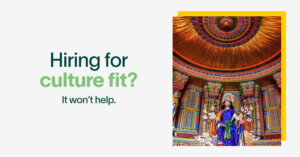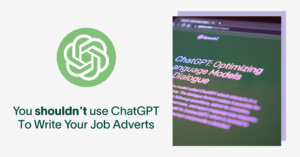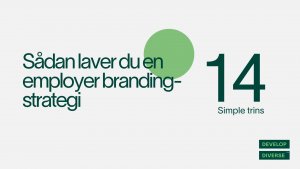The talent acquisition process is often a daunting experience for folks from ethnically marginalised groups.
Even before your candidate gets into the interview room, they’ve had to navigate assumptions about their name, location, education, and many other details that relate to their individual identity. Once they get into the interview room, they experience a whole new set of challenges.
In this post, Dr. Poornima Luthra, associate professor at Copenhagen Business School, and founder of Talented Consultancy APS, explains how to make your company more attractive to folks from ethnically marginalised groups — and why it’s important.
How applicants from ethnically marginalised groups experience the hiring process
The term ‘ethnically marginalised’ refers to non-privileged or socially underrepresented groups in our society. It describes how people belonging to different race and ethnic groups have historically experienced marginalisation, prejudice, and discrimination, across our whole society, including healthcare, education, and the justice system.
So it’s no surprise it happens at work, too:
- A 2016 study found that job applicants from marginalised groups were more likely to get invited to a job interview when they downplayed racial identity clues.
- A 2018 study found that Black job seekers are expected to negotiate less in the interview process. And when they did negotiate, interviewers offered them a lower starting salary.
- A 2022 joint report by LeanIn and McKinsey found that Latinx and Black women are less likely to receive support for their career development.
“If someone is from an ethnically marginalised group, then they are likely to have internalised some of the biases, social conditioning, and discrimination that they have experienced in the past,” explains Dr Poornima. “That could have an impact on how candidates behave in the interview, causing them to feel more cautious and guarded. They may also dress or behave differently to fit in with majority norms. This means they’re less likely to show up as their whole selves.”
Creating a more inclusive hiring experience for candidates from marginalised ethnic groups
Being aware of the moments of bias in your own recruitment process is critical to attracting candidates from a more diverse candidate pool. This starts right from your job advert, and extends throughout your whole process.
“During the application process, we know that people often make assumptions based on a candidate’s most basic details, including their name, university, or address,” says Dr. Poornima. “Creating a more inclusive process starts with the application and job description. Your job advert needs to communicate that a candidate from an ethnically marginalised group will actually feel included, instead of becoming a token hire. This includes making sure you use unbiased language — but you can also explicitly state that you value diverse perspectives.”
To make your hiring process more inclusive to folks from ethnically marginalised groups, Dr. Poornima recommends a few inclusive changes:
- Remove in-group references in your job description, like ‘Friday bar’ or the Christmas party, and choose more inclusive options.
- Anonymise CVs to eliminate unconscious bias, including name, address, and education background.
- Use a structured criteria to evaluate candidates only based on skills and competencies.
- Be explicit about screening and interview processes, providing detail on how you review or anonymise CVs, evaluate skills, and your interview panel composition.
Once candidates get into the interview room, Dr Poornima says that a structured process is essential to ensure everyone is evaluated fairly.
“In the interview process, you want to create an environment where you see every candidate at their best,” says Dr Poornima. “A diverse panel will help your candidate feel represented and more comfortable as well as bringing a varied range of perspectives. Meanwhile, a structured process will help you avoid unconscious discrimination and bias, and make sure you ask the same questions to everyone.
“For example, if you ask a Muslim candidate if they will be comfortable attending a Friday bar, but don’t ask non-Muslim candidates the same question, that question is coming from a place of bias. In all instances, you need to ask: Would we ask this question of for example, a White Danish man? If the answer is no, it’s not the right question to ask.”
Creating an inclusive process starts with communication
Building a more inclusive talent acquisition process starts with how you communicate your role and process to folks from ethnically marginalised groups. That depends on choosing the right language, skills, and competencies that show your organisation is an inclusive place to work, where every candidate — no matter their identity — can thrive.
At Develop Diverse, our inclusive communication platform gives your talent team the tools they need to sell your employer brand, attract a diverse pool of candidates, and build a more inclusive recruitment process where everyone feels welcome.
Book a demo with one of our team members today.





